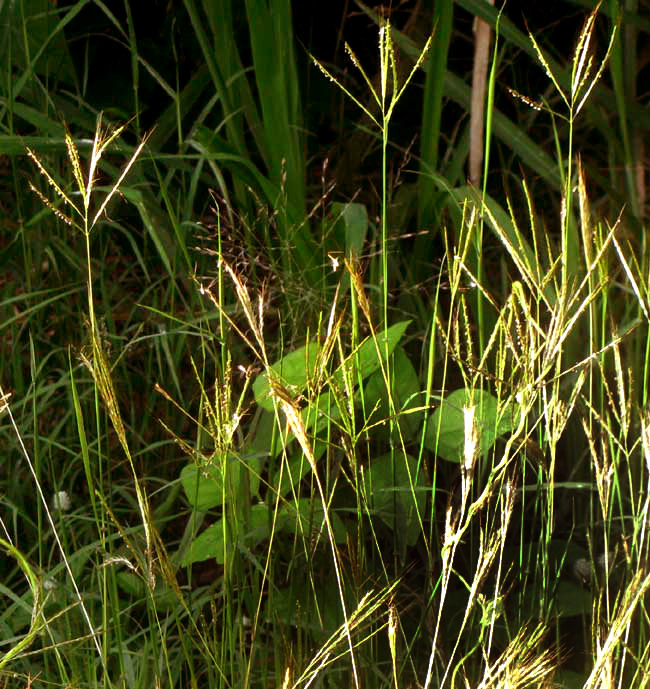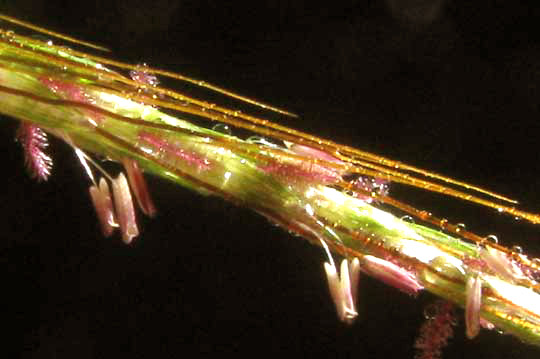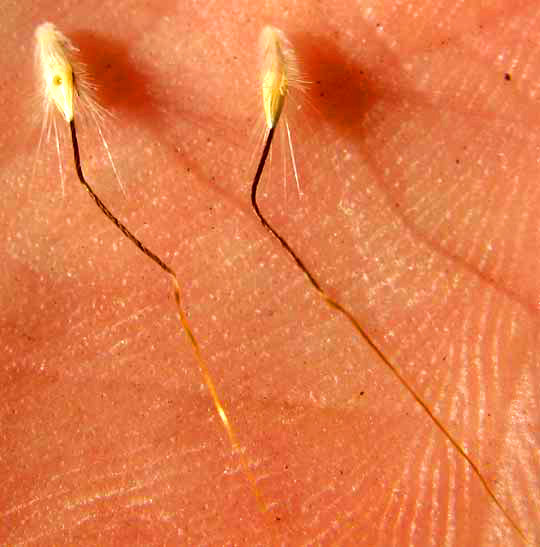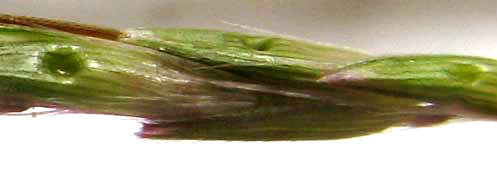Excerpts from Jim Conrad's
Naturalist Newsletter

from the November 13, 2011 Newsletter issued from Hacienda Chichen Resort beside Chichén Itzá Ruins; limestone bedrock; elevation ~39m (~128ft), N20.675°, W88.569°; central Yucatán state, MÉXICO
INDIAN BLUEGRASS
Here at the end of the rainy season many grasses are flowering. One knee-high species often forming dense communities in dry soil along roadsides is shown above. At first glimpse it looks a lot like crabgrass. However, up close, you see that the flowers are arranged in a completely different way, and bear long spines, or "awns," as seen below:

In that picture the clothespin-shaped items dangling on slender filaments are baglike, pollen-produce anthers while the purplish, fuzzy things are stigmas, the part atop a flower's ovary that catches pollen. The brown, needle-shaped things are the awns.
You can see two long-awned fruits, or achenes, below:

The achenes are unusually hairy, and the awns are spectacular for their length and the way they bend and twist several times at their centers. Such long, twisted awns on a grass achene always remind me of a Walt Disney program I saw back in the 60s showing sped-up movies of such achenes fallen onto the ground. As they underwent humidity changes the awns unwound or wound up, and if the awn caught on something nearby such as a plant or a rock, instead of the awn twirling round and round as it unwound or wound up, the achene screwed itself into the soil!
Another curious thing about the achenes in that last picture is that the one at top, left has a pit in it. I figured it was a bug-eaten hole until I noticed that nearly all the flowers bore them, as shown close-up below:

I'm guessing that these tiny pits contain glands producing chemicals that repel herbivorous animals. This hypothesis is supported by the fact that if you wad up and squeeze several flowers they emit a medicinal odor that well might repel a hungry bug.
This grass, native of southern Asia, now occurs throughout the world's tropics, so it goes by many names. Among its English ones are Indian Bluegrass, Indian Couch Grass, Sweet Pitted Grass, Pitted Beardgrass, Hurricane Pitted-Bluestem, and Hurricane Grass. It's BOTHRIOCHLOA PERTUSA.
In our area basically it's a roadside weed, plus its found in heavily grazed or frequently mowed areas, and open woodland on clay and clay-loam soils. An Indian website relegates it to "cracking clay soils," and that's an apt description for here, too. Agronomists regard the species' presence as indicating declining soil fertility and excessive grazing.